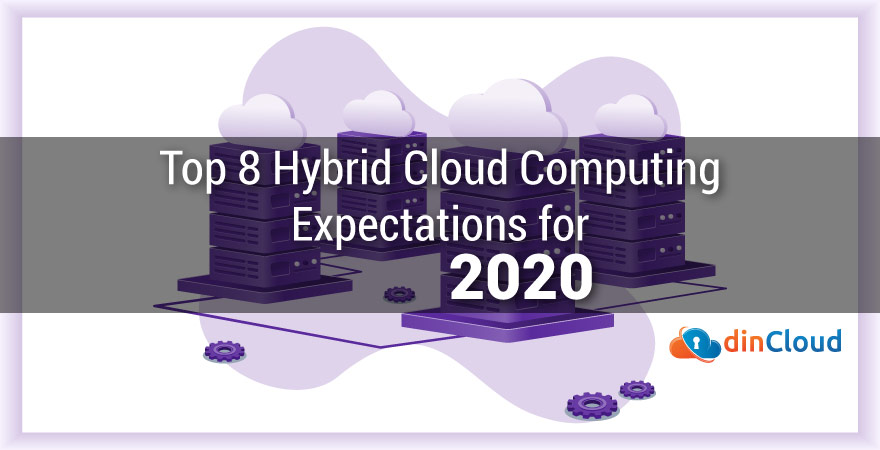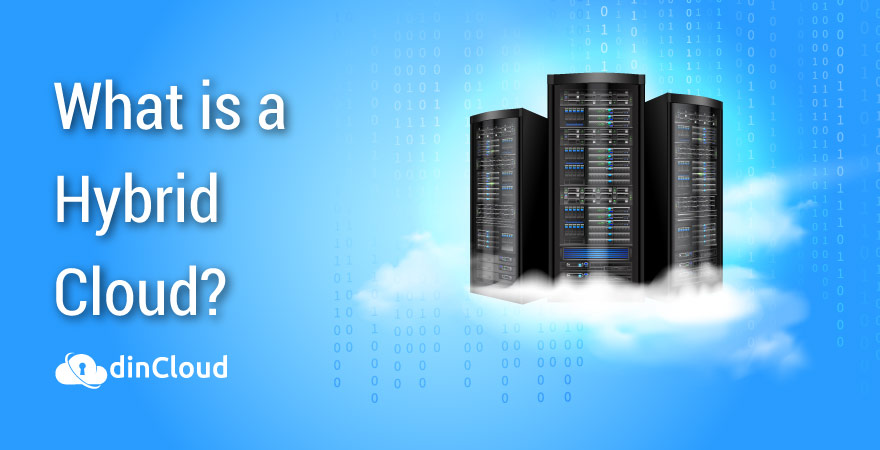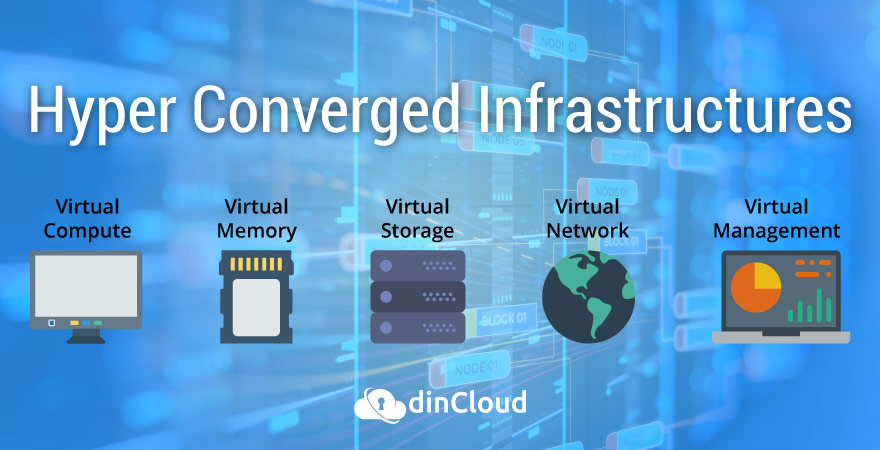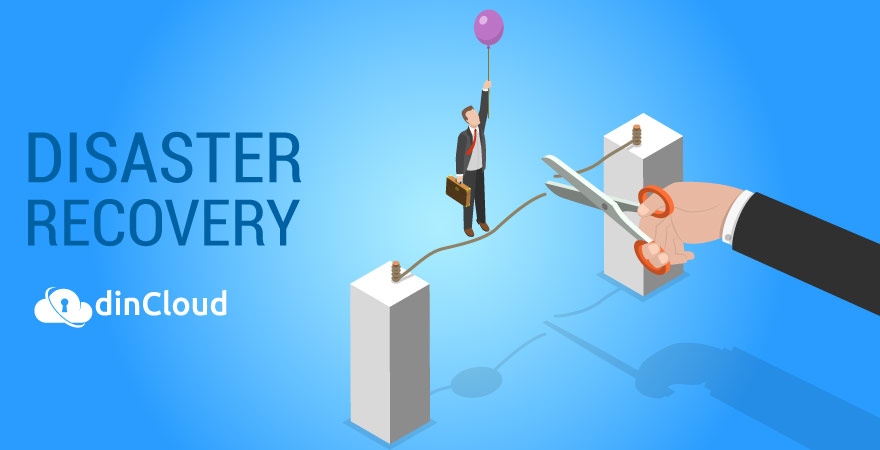The Cloud Computing Industry has recorded phenomenal growth over the past few years. As more enterprises realized the cost related and administrative Benefits of the Cloud, the adoption rates kept getting higher. By now, the basic Cloud Solutions market has matured to a good extent.

Hybrid is the New Cloud
Presently, the cloud computing industry is experiencing a new cycle of evolution. We can call this recent trend as the hybrid cloud. After the tremendous success and adoption of conventional cloud, the industry is now moving towards more versatile cloud based offerings.
Also Read:
- 7 Cloud Computing Predictions for Year 2020
- Why Multi Cloud Computing Is Better Than Hybrid Cloud Computing?
- Ransomware Incidents to Spike in Year 2020 [Study]
What is a Hybrid Cloud?
In this environment, a cloud adopting enterprise does not adopt full reliance over the cloud infrastructure. Instead, a Hybrid Cloud is characterized by some functions of the enterprise remaining on premise, while other less critical functions are entrusted to a Cloud Service Provider (CSP) such as dinCloud.
Hybrid cloud services are in fact an extension of traditional cloud computing environments. In the simplest of words, we can define the hybrid cloud as a near perfect balance that enterprises can strike between fully on-premise hardware and an entirely cloud powered model.
Hybrid cloud solutions enable enterprises to digitize at a much faster pace, with little to no compromise on the level of control they may want to retain over mission critical operations. This cloud model enables you to retain certain workloads on-premise till you get well conversant with the newly incorporated cloud infrastructure.
The concept of hybrid IT and cloud computing may prove a bit overwhelming for entities that don’t have the in-house IT related expertise. Many a times, the deploying organizations are on strict timelines and inability to deliver on time affects organizational output and morale.

Reasons for Hybrid Cloud
One of the major factors that contribute to partial transition to the cloud infrastructure is concerns around security. As the public cloud is a highly shared resource, most organizations feel nervous to entrust CSPs with their business critical data.
The other contributing factor is ensuring Business Continuity (BC). Depending on which side of the argument you are, this factor works both ways. An organization may consider the cloud infrastructure more secure in terms of BC priorities.
On the contrary, some organizations feel maintaining business critical functions on premise will make for a much more robust and reliable BC posture. Lastly, entities tend to outsource seasonal workloads to the cloud for obvious costs preferences but maintain stable workloads on premise.
There are hybrid cloud service providers out there, but you need to give this crucial step a lot of consideration. Does the CSP have the in-house capability to meet your needs within the prescribed time is a vital question to ask yourself. We will try to highlight some major hybrid cloud 2021 trends that are likely to dominate this segment during the current year.
Related Stuff:
- Microsoft Ignite 2020 | What is Microsoft Ignite Conference?
- 8 Reasons: Why Cloud Computing For Small Business?
- Digital IT Trends in Pharma Pharmaceutical Industry
Hybrid Multi Cloud
As Cloud Service Providers (CSP) become more entrenched in their areas of expertise and core competitive advantages, their cloud offerings start becoming quite distinguishable. One CSP may develop an edge in storage while another CSP may choose computing power as its area of edge.
The outcome of this development is the increasing demand for Multi Cloud Architectures. Such a cloud environment is made possible by securing compute from one CSP, while storage from another CSP and so on. Despite the accompanying challenges, we should see the rise of the multi cloud.
Hyper Converged Infrastructures (HCI)
With the introduction of multiple cloud in the mix, integration and management related complexities are bound to occur. In order to keep these bottlenecks and challenges under check, HCI will grow. Despite the steep initial complexity in the implementation and integration cycles, this is the most optimal way forward.
Also Read: The Cloud Computing Journey

Disaster Recovery (DR)
There is hardly a mainstream business concern these days which can afford a disruption in service. The answer is a constant and fail safe DR mechanism in place for any eventuality. If entities go for developing a stand alone DR infrastructure, it takes a major toll on financial and administrative resources.

Also Read: Why you need Cloud Business Continuity and Disaster Recovery
On the contrary, CSPs are a very potent alternative to a company’s DR preparedness. We should see an increasing reliance on CSPs for DR infrastructure as well. The other observable trend here would be adoption of one CSP for core business operations and another CSP for DR and BC.
Hybrid Cloud Consistency
One of the biggest challenges of any hybrid cloud environment is consistency over the on premise apparatus and outsourced cloud solution. With highly effective and flexible integration tools, the lines between on premise and outsourced infrastructures will become even more blurred.
Hybrid Cloud as Future
If we observe some recent developments across the IT landscape, the most evident trend is highly in favor of hybrid cloud infrastructures. We can consider the hybrid cloud as a sweet spot that exists between the two extremes of fully on premise and entirely cloud reliant infrastructures.
Rise of Containerization
The concept of application containerization stems from an inherent drive towards efficiency and lightweight solutions. The other aspect that makes containers very effective is sharing of common resources. Therefore, we should see rapid development initiatives towards containerized enterprise applications.
Edge Computing
We should not see edge computing in isolation to cloud based solutions. In fact, edge computing is something that supplements the cloud infrastructure and adds a whole new dimension of efficiency to the existing apparatus. In simple words, edge computing is localized processing of lighter and time sensitive workloads.
Also Read: 12 Cloud Computing Predictions for 2020
Edge computing assumes a reasonable chunk of workload off from the cloud infrastructure and not only collects, but also processes data at the most localized level. This concept highly optimizes business processes that are heavily time centric. Optimizing core processes goes a long way in improving overall organizational efficiency.
The trend of deployment of edge computing apparatus will gain more momentum over the year 2021. In addition to collecting data at the localized tier, these edge devices will also be capable of processing this data and executing certain business processes as per laid down criteria.
Edge computing will serve a two tier advantage for organizations. Firstly, this phenomenon will go a long way in improving organizational efficiency and optimizing core operations. Secondly, edge computing will reduce the resource burden from the existing cloud and on premise infrastructure.
Hybrid Cloud Management
Although the idea of hybrid cloud infrastructures is too good to pass, there are still many challenges and bottlenecks that have to be confronted prior to materializing the anticipated benefits. Given the trend of hybrid cloud, coupled with multi cloud deployments, the task of integration is bound to grow in complexity.
To manage and mitigate this complexity, organizations will be requiring highly robust, intuitive and reliable cloud management solutions. These solutions will primarily overcome the integration challenges to streamline the functionality of multi-faceted infrastructures.
Secondly, these cloud management solutions (CMS) will also perform the additional role of enterprise workload management. The whole idea behind hybrid and multi cloud deployments is efficiency in terms of costs and performance. In order to achieve these goals, effective workload management will be imperative.
We should see extensive software development initiatives geared towards creating intuitive, robust and reliable cloud management solutions. The future viability of hybrid and multi cloud deployments will hinge on the inherent capabilities of such solutions.
Hybrid cloud integration challenges are something you need to give a serious thought, especially in the backdrop of meeting any stringent timelines or milestones. You can even convert these challenges to opportunity by developing in-house capability during the whole deployment process.
Conclusion
After the reign of cloud computing, we are entering into an era of hybrid and ultimately fully functional multi cloud infrastructures. Organizations that want to remain on top of their respective domains will have to embrace and adapt to these infrastructures or face serious sustainability and viability challenges.


